
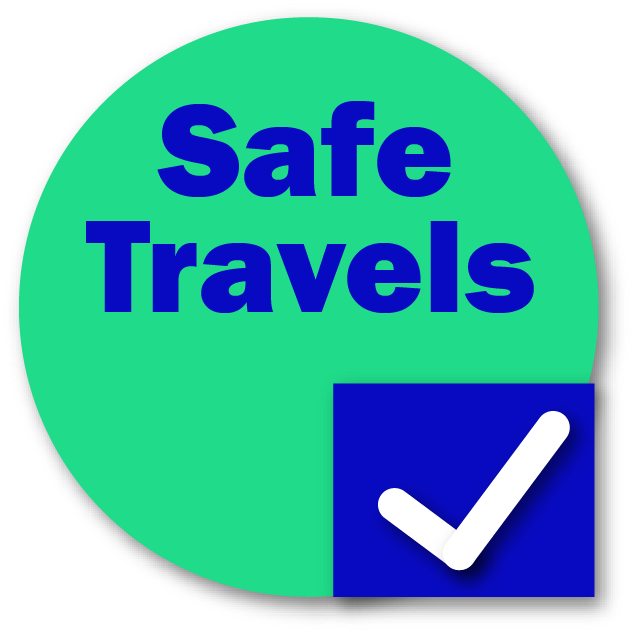




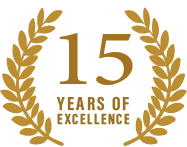
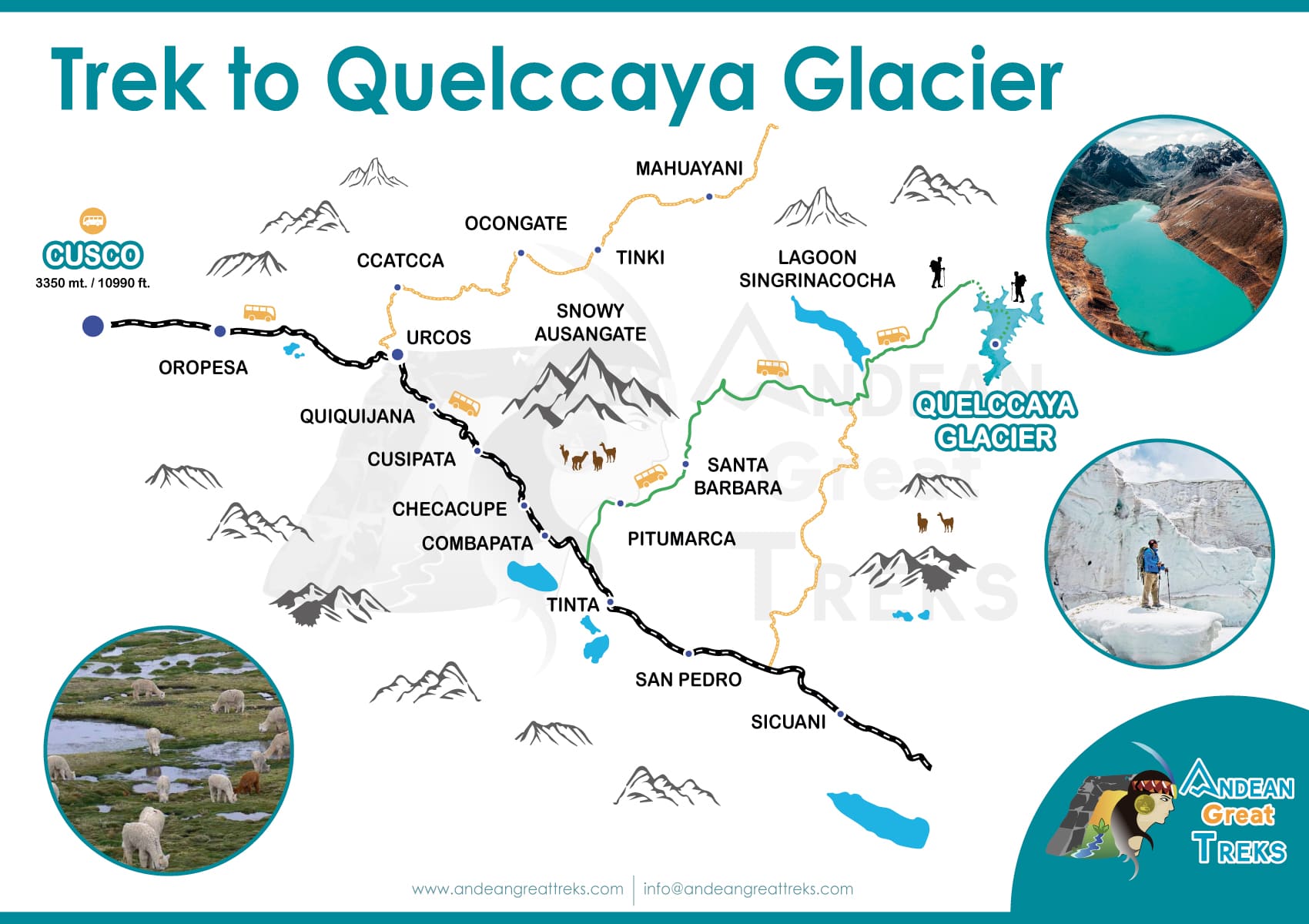 trip overview
included
trip highlights
activities
accommodations
itinerary
faq
packing list
essential trip information
best season to travel
price & availability
Reserve Online
trip overview
included
trip highlights
activities
accommodations
itinerary
faq
packing list
essential trip information
best season to travel
price & availability
Reserve Online
 CREATING AUTHENTIC TOURS IN PERU
CREATING AUTHENTIC TOURS IN PERU

Trek to Quelccaya glacier is located in the southeast of Peru, in the Cusco region, it is the most extensive tropical glacier in the world of 44 square kilometers and an ice layer more than 200 meters thick. It is one of the favorite destinations for professional mountaineers, who come to conquer its peak.
Quelccaya is a majestic glacier, ideal for practicing adventure sports and appreciating nature; numerous species of fauna such as alpacas, llamas and vicuñas inhabit this area, which are of great importance to the nearby populations of this area. It is made up of U-shaped valleys, glacial streaks in the volcanic rocks and beautiful lagoons in the Vilcanota mountain range.
Peru is a country where you can find almost all the ecosystems in the world. A clear example is the Quelccaya glacier in Cusco, considered one of the wonders of the country. Glaciers are the largest freshwater reserves on the planet. They are a source of water for agriculture, industrial activities and domestic uses.
This trekking is classified as one of the most difficult activities, due to the high altitudes that are reached during its trails, normally the excursion is made above 4,800 masl, and the highest point will be 5,400 masl. For this, we recommend doing this trek only for people who already have a lot of experience in high mountain routes. Because otherwise you could suffer the symptoms of altitude sickness. Likewise, you must be prepared to face the most hostile weather conditions, such as nights below -5 C °. Walks on hard terrain and with little oxygen.
If you have not had much experience in mountaineering, you should at least adapt your body to altitudes of 3500 masl 4 days before your Quelccaya tour.
Confortable Mountain Lodge : 1 night
Today we will pick you up from your hotel in the city of Cusco at 7:00 am. Then we go in our private transport to the town of Pitumarca, where we will make a stop to buy some products such as fruits, coca leaves, and some food for our adventure. Continuing with the tour we will continue towards the Ofecina valley, from where we will already appreciate the typical bucolic landscape of the Andes of Peru, surrounded by great mountains and herds of llamas grazing next to their shepherds.
After 4 hours of driving we will arrive at the Chilca valley from where we will undertake the ascent to the highest pass of the day, the great Jahuaycate (5070 masl). During the journey we will enjoy the most impressive views of the highlands of the Cusco region, where it is surrounded by the great chain of Ausangate Mountains, herds of Vicuñas, flamingos. At noon we will arrive at the great Sibinacocha lagoon, which has a natural beauty next to the Yayamari mountain.
At 13:00 pm, we will finally arrive at the town of Phinaya (4,700 masl), where we will be received by our local guide, who will provide us with the local lodging service. Upon our arrival our lunch will be ready.
In the afternoon we will explore the Parque de los Glaciares, located 30 minutes by car from the town, this natural beauty offers hills of colors, and we will enjoy a beautiful sunset in the Ccascara lagoon. On our return we will have our dinner, and rest for our great hike the next day.
Today we start early with our expedition, at 6:00 am it will be our breakfast, and then we go in the transport to the starting point of the walk. At 7:45 am we start the ascent passing through the Ruyta wetlands, after two hours we will arrive at the Ch’allpa lagoon, from where we can see the Ausangate mountain ranges.
After two more hours we arrive at the Quelccaya glacier lagoon, and from there we will explore the glacier in all its magnitude, then we will go to the other viewpoint where we can see two lagoons, one chocolate-colored and the other turquoise, with the bottom of the great snow-capped Quelccaya.
After eating our snack lunch, we begin the descent to the Ruyta Valley, we will cross large plains where it is inhabited by vicuñas and alpacas. Today we finish our walk around 3:00 pm.
At sunset we leave the town of Phinaya, and return to Cusco where we will arrive at 10:00 pm.
Like most trek in the region, the best time to do the trek to Quelccaya Glacier is in the dry season between May and September. Unlike other popular treks, the Quelccaya is very quiet, even in peak season.
In the shoulder months of April and October weather is still pleasant and the trek is very possible. However, because of its altitude you’ll have to contend with freezing nights, even in the dry season. Because of the altitude and snow, the trek is best avoided in the wetter colder season between November and February.
Temperatures during the day in the dry months are usually quite mild and visibility is very high. Because of the height you’ll want to make sure you are wearing layers, especially for the colder nights. Visitors to Quelccaya Glacier should come prepared with clothes for all weather, as conditions can also change quickly.
The weather at Quelccaya Glacier is very unpredictable, changing frequently and quickly. You might see warm weather and sunny skies one minute and then cloudy skies and snowfall the next. The best idea is to make sure you’re prepared for all weather by dressing in layers.
In the Vilcanota Range, there is a dry season and a wet season. The dry season is between May and September, and is considered the best time to hike in the Andes. Keep in mind, however, that the dry season, containing Peru’s winter months, is also the colder time of year. The coldest months are May through July. Expect the days to be cool, no warmer than 40 degrees F, and the nights to drop to freezing temperatures as low as 10 degrees F.
The rainy season is between October and April. While the rainy season is warmer, it can still be cool at night. In fact, there can be heavy snow as well given the elevation. The rain and snow can cause muddy conditions on the trail and even partial closures. It is especially inclimate between January-March, with February bringing the most precipitation. The shoulder months of October and April bring more moderate weather with mixed rainy and dry days.
Dry Season – June to August
Should Season – April to May & September to October
Rainy Season – November to March
The snowy Quelccaya, is located in the Vilcanota mountain range at 5,710 meters above sea level. It has 44 square kilometers of (plateau) extension as a particular characteristic, this makes it the largest tropical glacier in the world. For the inhabitants of this area, this snow-capped mountain is considered one of the main Apus of this chain due to its breadth, there are also glacial lagoons, rock formations, rivers, waterfalls and, above all, a scenic beauty expressed in the majestic mountain range of the Peruvian Andes, you can also see a large amount of wildlife native to the high area such as: deer, condor, vicuñas, Andean fox, vizcachas, wild cat and a great variety of birds. You can also see common flora of this area such as ichu, maychas, iru ichu, urtica and others.
The highest ridge of the glacier is at 5,650 meters above sea level and the terminal tongues fluctuate between 4,900 and 5,100 meters above sea level.
Climate change is causing a retreat and lowering of the level of the main tongue of the Quelccaya glacier, which leaves the strip of rock and debris uncovered. Small lagoons around the glacier are also evidence of decline, as they occupy depressions left behind by the retreating glacier.
Quelccaya Glacier is not like some other high-altitude treks e.g. Everest Base Camp trek or Annapurna Circuit that start at lower elevations and gradually gain altitude. The entire route of the Quelccaya goes over 4900m. Good acclimatization is the key here.
Altitude sickness, or Acute Mountain Sickness (AMS), is a health effect that can arise at high elevations. Minor symptoms include headache, fatigue, difficulty sleeping and dizziness. More progressed cases can result in vomiting, shortness of breath and high altitude cerebral edema, which is associated with lethargy, nausea and disorientation.
Altitude sickness occurs in 20 percent of people at 8,000 feet and 40 percent of people at 10,000 feet. For a hike like the trek to Quelccaya, it is highly likely that you will experience some form of altitude sickness, as elevations reach as high as 16,800 ft. For this reason, it is important to acclimate properly, take your time on the trail and take measures to combat symptoms.
The possibility of experiencing altitude sickness is one of the most common concerns for visitors to Quelccaya. Altitude sickness is caused by a lack of oxygen at higher altitudes and can set in at altitudes above 2,500 meters (8,000 feet) above sea level, putting Quelccaya Glacier’s altitude of 5,400 meters (17,700 feet) well above the minimum elevation where it can occur.
Many people arriving in Cusco by bus from Lima or the Amazon get altitude sickness. It is normal if you fly or go by bus from a low altitude to a location more than 3000m above it. Our body needs time to adjust to the decreasing amount of oxygen available due to the altitude, the higher you go the lower the air pressure and the less oxygen available to you.
How to prevent
As a foreground, the point from where this excursion will start is Cusco, which is located at an altitude of 3500 masl.
It is there where you will have to acclimatize before starting the Trek to Quelccaya, together with your friends and all the crew that will accompany you.
The second day you will start a trek from the town of Phinaya (4700 masl) towards the mythical mountains of Quelccaya.
On a normal day in the trek to Quelccaya you gain height from 800 to 1000 meters per day. The highest steps exceed 5,200 masl. With all this data, it is considered that the Ausangate route is to be well prepared and adapted to the climates and challenges of the Andes.
The Trek to Quelccaya Glacier is considered strenuous, with a few moderate days sprinkled in. The trek is classified as Grade C in difficulty, which implies altitudes between 15,400 to 17,700 ft (4700-5400 m) and 6-8 hours of hiking per day. There are many steep sections that cause rapid altitude gain in a short time. Anyone with a good level of fitness can manage this hike, but it is recommended that trekkers have experience with multi-day hikes at high elevations.
Another factor to consider, aside from the steep sections and 16,000 ft+ elevation passes, is the weather. The weather can be quite unpredictable, and blizzard conditions at the higher altitudes are not uncommon. It is important to factor the low temperatures and your tolerance to cold and snow when determining your suitability for this trail.
Andean Great Treks is proud to have the best staff of chefs specialized in high mountains, with more than 15 years of experience, in the different trekking routes in Cusco. On our Quelccaya Glacier route we provide you with the best food service every day, our chefs will prepare meals with 100% fresh and organic foods, since our company is focused on community work and support for farmers who provide us with their best fruits.
We have fantastic trek cooks who prepare a wide variety of meals, and each cook has his or her own specialties.
Breakfast can be porridge or cereal & yoghurt, with toast and eggs, or pancakes, marmalade, honey and spreads tea, coffee, coca, tea, herbal teas. For lunch the cook prepares hot or cold lunch dish speciality. Sometimes it can be trout, or pasta or some salads, and we have hot tea, coffee or herbal tea. Afternoon tea is biscuits with guacamole popcorn, wantons or a special treat from the cook with more tea & coffee. Dinner is always 3 course – a hearty soup with is a Peruvian specialty, a main dish of chicken or meat with vegetables, or vegetarian option and a dessert, plus tea and coffee, or drinking chocolate.
We give you a snack pack for the day with biscuits, chocolate, dried fruits, muesli bar, pieces of fresh fruit.
We also cater for vegetarian or vegan diets, gluten or dairy free and special diet requests.
Andean Great Treks has professional, knowledgeable, dependable and experienced guides, who all are well trained for us every year. All of our guides have spent years exploring the mountains and studied in Universities and Institutes of Cusco. All guides speak fluent English and have a great knowledge of the various trekking routes. Our Guides will have the pleasure of guiding you in the most beautiful trails in the Ausangate Trek, Inca Trail, Lares Trek, which will enhance your holiday experience and make it a real success. Our guides are trained in first aid and know how to do in any emergency situation. And most importantly our guides are very friendly and enjoyable and want to share with you the faith of Peru.
Because it is one of the most demanding trekking routes in terms of physical and mental levels, we recommend doing this activity only for young people between 15 and 55 years of age.
Since they are the ones who can manage with great skill in these difficult routes of the Andes of Peru.
Although there were people up to 60 years old who were able to complete this fabulous route . Always before embarking on a trekking adventure anywhere in the world, we advise you to consult your doctor.
For trekking, it is not necessary to be “super fit”, but you do need to be of generally good fitness and a regular walker. You need to be able to hike continuously uphill (sometimes steep) for 2 to 2½ continuous hours with rest stops to reach the top of a pass. Total walking time in a day varies from 3 or 4 hours to up to 7 hours for moderate treks and the hard treks can be up to a 9 hour day.
For climbing you need have good aerobic fitness and be generally strong, and it is important to be well acclimatised. On many of the climbs, you have to carry your equipment with sleeping bag, mattress, clothes and climbing gear up to a high camp in a backpack and you need to be strong enough to manage this.
We recommend purchasing travel insurance if you plan to trek in Peru. Most of the trekking spots in Peru are very remote so if something goes wrong you will likely need an emergency evacuation and that can be incredibly expensive.
When choosing travel insurance, be sure to purchase a plan that covers high-altitude treks and helicopter rescue, just in case.
The briefing is very important because it is when you will meet your guide. During this meeting, your guide will provide you with important details regarding the Trek to Quelccaya Glacier. If you are participating in any of our treks, you will be given a duffle bag for your luggage. At the briefing, you will also pay your remaining trek balance. You will be given a map to our offices with your booking information.
Tipping is not mandatory on a guided Trek to Quelccaya, but it is highly recommended. You will be amazed by the amount of work and dedication that the guides, chefs, porters and other crew bring to your experience. Tipping is a great way to show your appreciation for the incredible experience. A good rule of thumb is 30-50 soles ($8-$15) per hiker per day. All the hikers on the team can pool their tips and then hand to the trekking team, who will distribute among themselves.
On the route to Quelccaya Glacier it is possible to find shops to be able to supply water on the first day. You will then be provided with water that is boiled and then filtered, to avoid any kind of illness or discomfort. It is not a good idea to drink water from waterfalls, lagoons or streams, as many of them could contain toxic minerals or bacteria that are harmful to human health.
Yes. This is very important!!! We recommend that you bring 300 to 400 Peruvian soles. It is possible that you may not need any of this money, but just in case of an emergency you should make sure to have plenty of cash. If you are struggling on the route, you can use the money to purchase alternative forms of transportation such as: car, horse.
Groups are usually 2 to 8 people. This also depends on the time of year. The maximum is 10 people and the minimum is 2 people.
If you can charge your devices, in our lodge we have electricity during the night. On the internet it is possible to access but only very limited, and you must pay the owner of the Wi-Fi signal.
Andean Great Treks organizes the Ausangate treks with a responsible and serious team of muleteers. Those who are in charge of their times and walk controls on the Ausangate Trek route. If you have a deficit in the pace of the walk, you will be given an assistance horse, which you can use, until you recover and you can continue the trek normally. Attention that our programs do not include horse rides during the whole journey, if in case you wish to do the tour on a horse you must communicate it at the time of your orientation in Cusco, and the guide will tell you how much it will cost and how is the service. For reasons of animal protection our company has some restrictions on the weight that you must carry or of the same person, Andean Great Treks does not allow animal abuse under any circumstances. Remember that we do the Ausangate trek to walk and enjoy the beautiful landscapes of the mountains and lakes, which will surely be a unique experience in your life.
If you could not complete your Quelccaya Trek program, because of health problems or any other circunstances, in the first instance you will be evaluated your vital signs, then you will be evacuated as soon as possible to a nearby place with highway, and once there you will be transported in local mobility to Cusco. Since there are no well-equipped hospitals in the Ausangate Mountains, these expenses will be covered by you. So it is suggested to have travel insurance that covers such incidents. In adition our company will not refund the tour cost already payed.
Andean Great Treks is a serious and formal tour operator travel agency. As such, in all our Trekking activities we normally carry the oxygen tank, which can be used if one of our clients requires it. Remember, it is a medium oxygen tank, which is used as an emergency mediation to stabilize the tourist, if it still requires more oxygen, you will be evacuated to a closer control point where a vehicle passes, and will also descend to a lower height, to avoid altitude sickness or a tachycardia.
A first aid kit is also carried, which serves to help tourists in emergency circumstances. But have this information: No person who does not have the certification of a doctor, pharmacist or nurse can prescribe any medication, since we do not know the true medical history of the patient, which instead of improvement can worsen their situation. That is why we suggest as an important measure, if possible, bring your own first aid kit with the pills that a doctor has prescribed before starting the Trek to Quelccaya.
The answer is , YES, since having trekking poles on the Quelccaya Glacier routes is vital, this instrument will help you overcome very difficult barriers, and have it in good balance during well-sloped descents. The type of cane that is recommended is of free will for you, since these define according to the food you are going to provide, it can be aluminum, carbon fiber, or other material, but if it has a good resistance When hiking, another no less important detail is that you must have the metal protectors at their tips, usually you will be accommodated with rubber soles. Preferably those that can be easily packed and tied.
We trek in any weather, and to date have never cancelled a trek due to bad weather. If clients choose not to make the trek because of bad weather, we can work with you to decide an alternative trek or day hikes, subject to our trek cancellation policy.
All climbs are subject to weather and if the guide considers that weather conditions are dangerous for climbing, then you will be taken back down the mountain.
We have a cancellation policy which you will receive with the booking form when you confirm that you will make a trek or climb with us. You need to read this so that you understand the cancellation terms. NOTE that if you cancel your trek or climb at late notice, we are still obligated to pay our crew the full trek fee for the period that we have booked them for unless we can provide alternative work.
We have some sleeping bags and climbing equipment available for hire and there is a reputable gear hire shop in Cusco that we work with who hire almost all types of trekking and climbing equipment and some clothing.
The Peruvian system is 220V, 60 cycles AC Power points generally are two point which either flat and round plugs. Adapters are not always available in Huaraz so you should bring your own.
You can recharge batteries in the cities if you have an adaptor. On trek there is no electrical supply available and no opportunity to recharge batteries.
The cold weather makes all batteries including digital camera batteries and headlamp batteries go flat very quickly. It is advisable to bring spare non-rechargeable batteries with you and always keep your digital camera warm by wrapping it in something warm when not in use.
Our guides and porters are trained in mountain first aid and altitude related illness. We always have a horse carrying equipment along with the donkeys, and for larger groups we take a separate rescue horse. If someone is unwell or has an accident, we evacuate them out by horseback to the nearest road or village where we organise evacuation back to Cusco. We always have sufficient staff with our crew so that one of our people can leave to care for the sick/injured client and the rest of the group can continue on with their trek or climb if they wish to. We have a company evacuation policy which the guides carry with them – it details the action to take evacuation is needed, the nearest evacuation point on the trek route and contact emergency telephone numbers.
It is important to realise that we are trekking in remote areas with limited communication to the outside. In some of the most remote areas it can take as much as two or three days to reach a village to be evacuated back to Cusco, while on other trekking routes we can have you safely back in Cusco in a day. There is no radio or cell phone contact in most of the areas we trek through. With large groups in remote areas and on climbing trips where there is no base camp radio or cell phone coverage we have a satellite telephone for emergency.
Official currency is Soles. US dollars widely accepted in bigger towns and large hotels, but you need soles for small hotels, shops and in villages.1 US$ = around 3.30 soles.
The exchange rate is fluctuating regularly because of the weakening US$ and exchange rates can change daily.
Always carry plenty of soles in small denominations in coins (2 soles, 1 sole, 5 soles). Street stalls, taxis and even most shops do not have change.
Euros can also be changed easily in Lima and Cusco for soles. Generally Euros can only be changed at banks or change houses (not hotels). There is a bank agency in the customs hall of Lima airport.
There are cash machines in Lima and Cusco. Don’t totally rely on them though for your cash as sometimes they are not functioning. Maximum withdrawal each time is between US$200 and US$400 depending on the bank. You will need your ATM cards to withdraw cash. Most machines do not accept debit card cash withdrawals. Cards must have a PLUS or CIRRUS symbol to work in an ATM machine.
It’s best to pack lightly for the Trek to Quelccaya Glacier. Generally hikers leave the bulk of their belongings safely in storage at their Cusco hotel, and bring only their hiking pack for the trek. This list ensures that you have everything you need for a guided trek without overburdening yourself.
Mountain clothing
Head:
Thorax / Core:
Bottom:
Hands:
Personal Team
Hiking gear
Electronics
Toiletries
Others
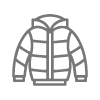 warm jackets
warm jackets
 Hydration bladder
Hydration bladder
 wool socks
wool socks
 camera
camera
 scarf
scarf
 first aid kit
first aid kit
 hiking shoes
hiking shoes
 Dry bags
Dry bags
 Trekking Poles
Trekking Poles
 sun cream
sun cream
 Snack
Snack
 sun hat
sun hat
 bathing suite
bathing suite
 rain coat
rain coat
 Sandals
Sandals
 insect repellent
insect repellent
 Passport
Passport
 Down Jackets
Down Jackets
 toilet paper
toilet paper
 daypack
daypack
 Wool cap
Wool cap
 head lamp
head lamp
 gloves
gloves
 sun glasses
sun glasses
 cap
cap
 extra cash
extra cash
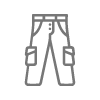 Trekking pants
Trekking pants
Want an in-depth insight into this trip? Essential Trip Information provides everything you need to know about this adventure and more.
View Essential Trip InformationThe best time to visit Peru is during the dry season, between May and November, when the weather is dry and bright, with more frequent rainfall occurring between November and April.
 JANUARY
JANUARY
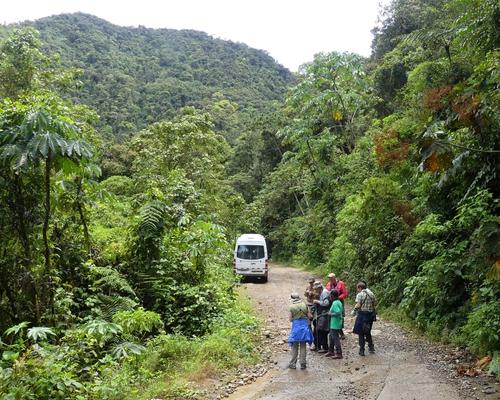 FEBUARY
FEBUARY
 MARCH
MARCH
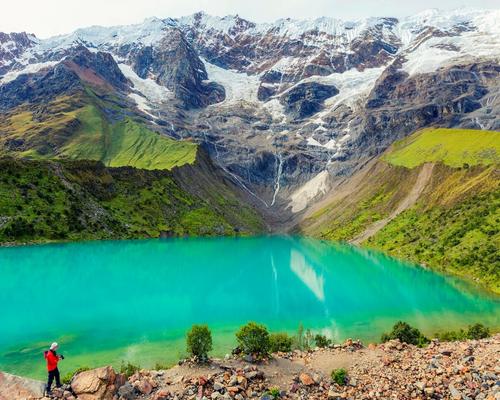 APRIL
APRIL
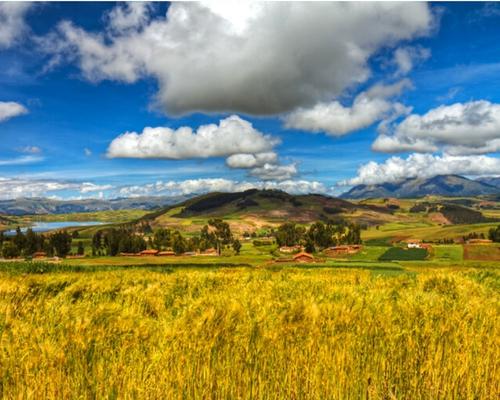 MAY
MAY
 JUNE
JUNE
 JULY
JULY
 AUGUST
AUGUST
 SEPTEMBER
SEPTEMBER
 OCTOBER
OCTOBER
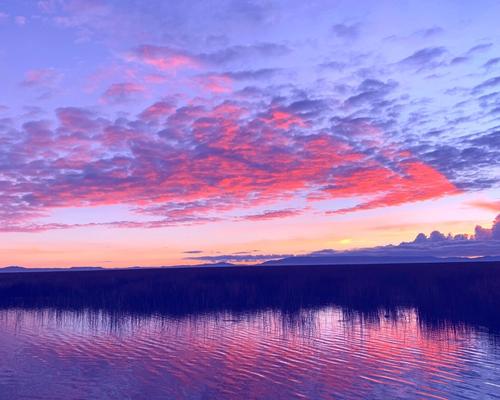 NOVEMBER
NOVEMBER
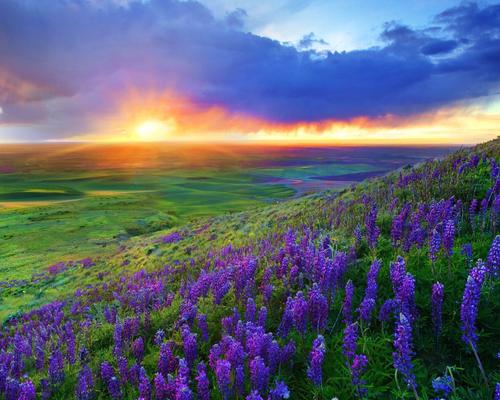 DECEMBER
DECEMBER
To book this tour, a minimum of $ 200 USD per person is required, the remaining balance will be paid upon arrival in Peru, at the Cusco office.
Any other additional information, please coordinate with your travel agent.

Nothing gets you closer to a country than walking through it, and we’ve got trips to suit walkers of all levels and interests.

All our Walking trips are graded from ‘Easy’ through to ‘Challenging to Tough’. On our online trip itineraries you’ll find a chart showing the daily walk distances, timings and information on the route including the terrain, altitude. Generally, no specific training is needed but you might feel more comfortable if you’ve got out walking a few times in the lead-up to your trip.
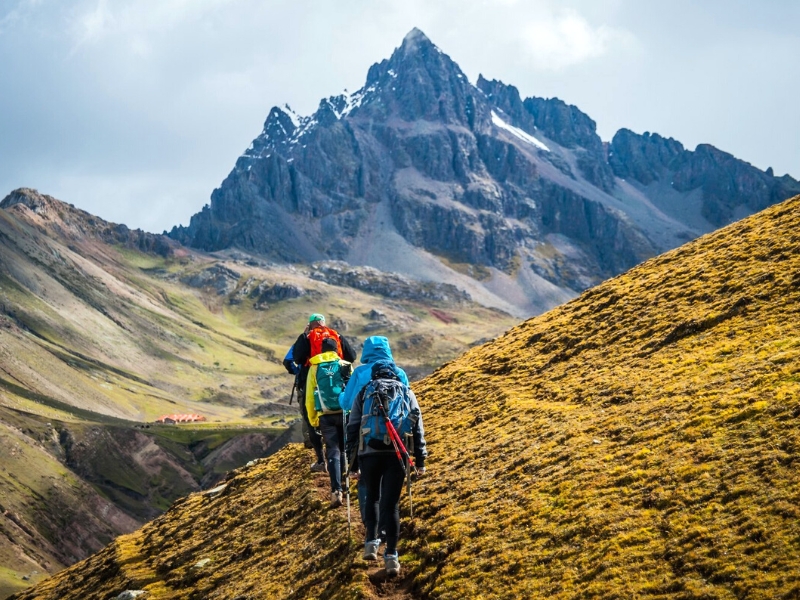
As with all our trips, every group is different but the ‘average’ group consists of roughly half couples and half solo travellers – all sharing a passion for exploring the world on foot. You’ll always have someone to keep you company along the route, but you don’t always have to walk together. Wherever possible your Andean Great Treks leader will allow everyone to walk at their own pace, regrouping regularly along the route.

Mostly of our hikes in the mountains in Peru and Cusco like the classic Inca Trail to Machu Picchu, Ausangate Trek, Lares Trek, Ancascocha Trek, Salkantay Trek , involves an average of walking hours of 7-8 hours per day, this timing includes stops for taking photos, lunch, breaks for recovery the energy, and the most important we adapt to your walking pace. This relaxed style of trip involves to know all the attractions in greater depth.

On nearly all our Walking trips, porters or mules will carry all the camping equimpent, so your main luggage will be transported for you. We recommend walk with a light rucksack, you will carry water, snacks, a camera, a small first aid kit and any extra clothing or sun protection. On more remote or challenging treks, additional guides are there to assist the leader tour guide and provide support to the group.
The acclimatization period is very important for our travelers to enjoy the experience. We suggest a minimum of 3 or 4 days of the previous stay in Cusco city, the Sacred Valley of the Incas or Machu Picchu. We recommend you check the acclimation programs we have prepared for you on our website.
The average height of our camps in the trekking circuits is 3,500 masl. In fact, one of the circuits where you sleep at the highest altitude is the Ausangate Trek, where you will have days to set up the tents at a height of 4,300 meters. Remember that Peru has snowy peaks that reach up to 6,700 masl.
From 3,000 meters above sea level, the symptoms of “altitude sickness” vary according to each person, and may even not occur. However, among the most common are a headache, dizziness, nausea, loss of appetite and insomnia. Therefore, upon arriving in the city of Cusco, located at 3,400 meters above sea level, we recommend our travelers to take a good rest, drink plenty of water, eat light meals and take slower walking. Also, it is necessary to avoid alcoholic beverages and cigarettes. The symptoms can be alleviated with high mountain medicines such as DIAMOX or similar products, but we suggest you consult with your doctor before the trip.
While on the trail, hikers will need to carry a daypack (camera equipment, water bottle, extra layers, rain gear, and other accessories you might need on the trail.) Horses and llamas will carry your duffle bag to the next camping site.
The company makes the greatest efforts to provide a safe and unforgettable experience, for this reason, the trekking guides are constantly communicated with the central office through satellite phones, ensuring the welfare of each passenger. Our guides are trained in rescue techniques and first aid in emergency outdoor, these courses are developed annually and have the standards of the wilderness first respond. At all times we have oxygen and first aid equipment. In case of any eventuality a medical director will answer our questions 24 hours a day. In addition to the animals who carry the luggage we have horses to help walkers tired or eager to ride. We recommend getting a travel insurance.
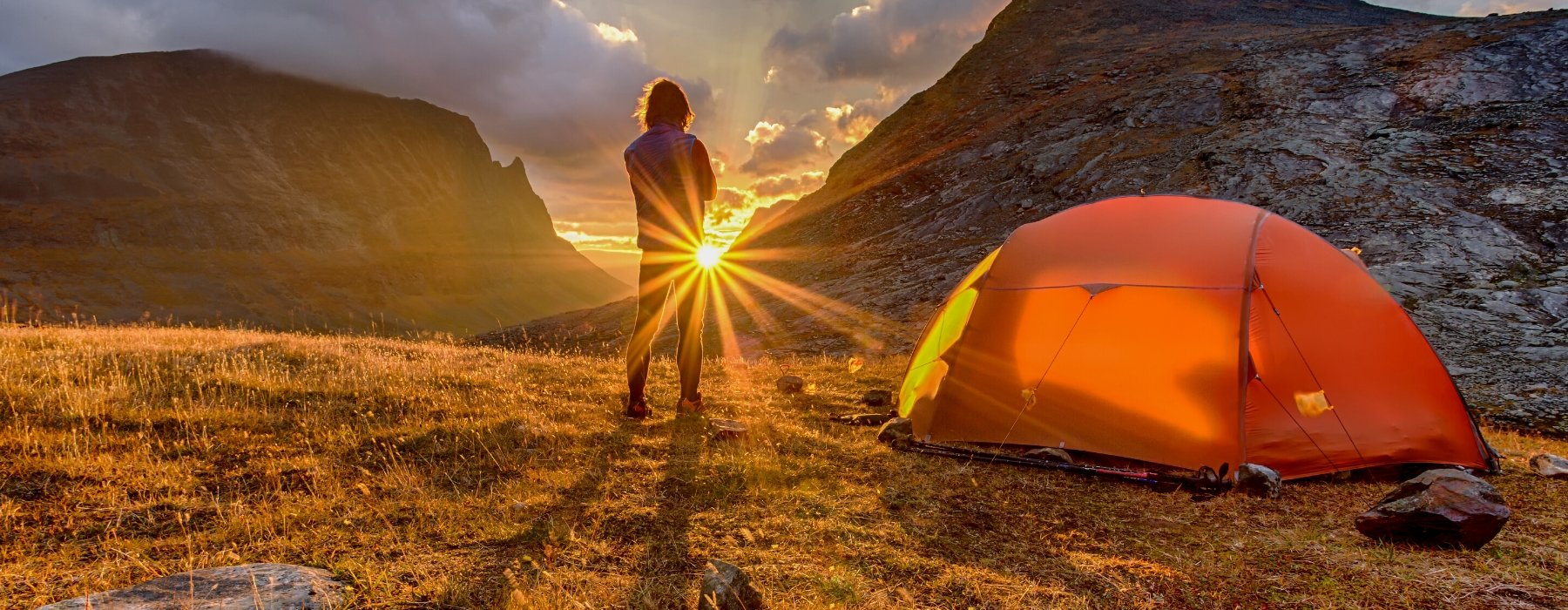
Every Andean Great Treks holiday has been thoughtfully planned and crafted by our specialists. They draw on their own extensive travel experience and the guidance and expertise of our local partners to create superb holidays. Our specialists are committed to making every aspect smooth and enjoyable; they genuinely want to ensure that the holidays they create leave you with wonderful lasting memories.
Every Andean Great Treks traveller is accompanied by an experienced tour guide, you will be immersed in Historic cities, ancient ruins and unfamiliar landscapes are all brought to life by our carefully selected local guides. They want to share their expertise and help you make your own discoveries too; their sole mission is to ensure you enjoy every moment.
Giving you the freedom to make your holiday even more memorable. We know how much our customers look forward to their holiday and we pride ourselves on the choice and flexibility that we offer to enhance every aspect of your experience. Whether it’s getting to the airport, upgrading your room or booking an additional excursion, we can help.

Our guides are the stars of the show; it is their unrivalled knowledge, passion and expertise that will transform your tour experience from good to truly extraordinary!
Because the have grown up in the area and know it like the back of their hand, so they can help you experience whichever aspects most interest you. They’re passionate about sharing their corner of the world with you, and as you explore together, they’ll open your eyes to the intricate details, provide background to enhance your understanding of what you’re seeing, and share stories that will bring everything to life.

“Your inspiration for a trip can be a single word or a highly evolved outline, but it’s the conversations we have that help us understand the experience you’re looking for. Meanwhile, I’m looking back on the time I spent at the destination.
‘The great thing about working with a specialist at Andean Great Treks is how they take your complete jumble of ideas and turn them into something absolutely spectacular.’
As you begin to share your ideas with your specialist, it will connect them immediately back to a time in their own travels. Conjuring a picture of the rest time they made that same discovery, reminding them how it felt.
Your specialist understands that, when the journey is right, it has the power to excite your emotions in the most profound ways after all, that was the effect on them.
They carry a treasure box of moments, captured over many journeys, into every suggestion they’ll share with you, as they ask you how you want to feel on your trip.

EXPERIENCES THAT CALL TO YOU
It’s what you do in a destination that helps bring it to life. It’s why we strive to choose experiences that help you connect to a place, absorbing a little of its complex character. Wherever your passions lie, we’ll recommend experiences that speak to you, and we’ll recommend the guide or local expert who’s most qualified to help you explore. Packing your holiday full of special experiences means some early starts and long days, but you can be sure that you’ll return home with many incredible memories! Read our Tours and check the Physical Ratings to see if the pace and activity levels are right for you.
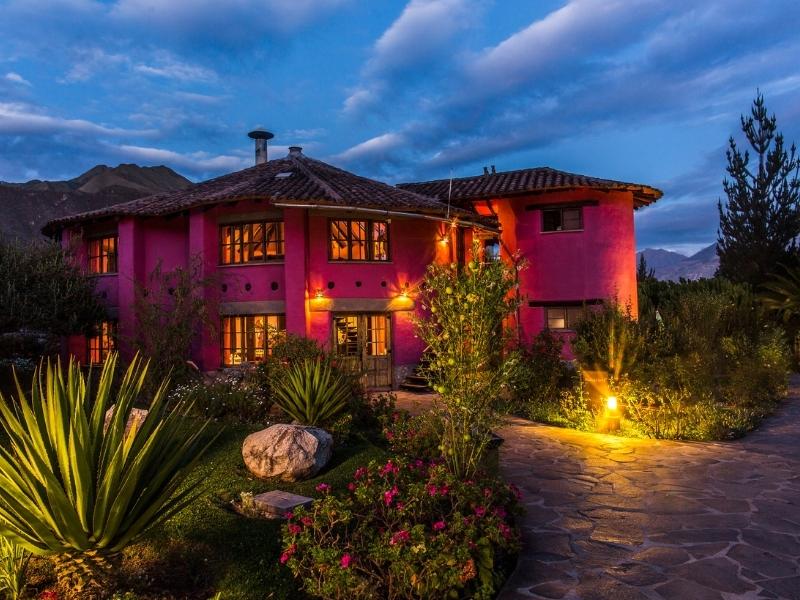
STAYS WITH DIFFERENCE
We know that where you stay is a cherished part of your travels. So, we go to great lengths to find places to stay that exceed expectations, or go above and beyond the ordinary, whether in their character, hospitality, or location. Over the years, we’ve discovered the very best properties, trying and testing them, so we can choose the right one for you. We’ve nourished long-standing relationships with these establishments and the people who founded them, and we’ve stayed there many times often, we’ll even know which rooms have the best views (and reserve them for you).
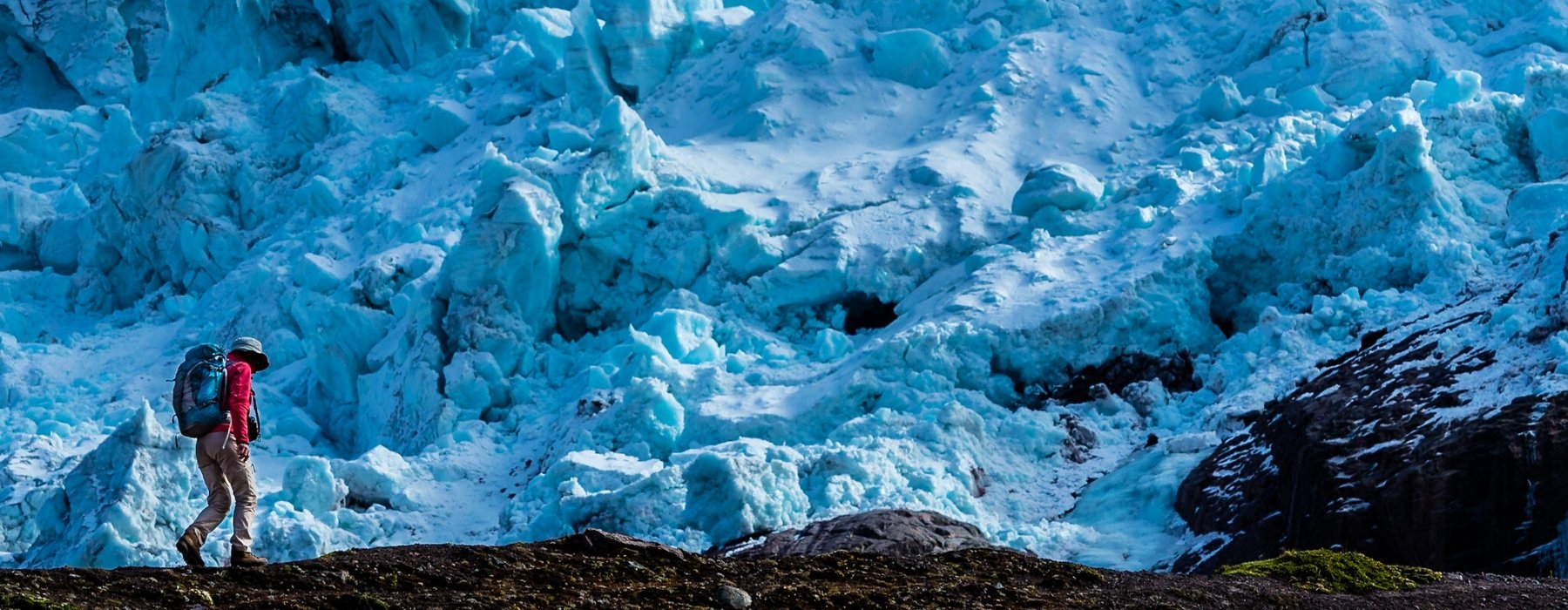
Our style of travel — authentic, thoughtful, and focused on building meaningful connections to the people and places you visit — is inherently respectful and considerate of the destinations we love. We design each aspect of your trip exactly as you want it, which includes its sustainability. That might mean choosing a train journey instead of a flight, staying at eco-friendly wildlife lodges, or opting for experiences that give back to the communities you’re visiting. The choice is yours.
Responsible travel has always been at the heart of what we do. First and foremost, because it gives you the best experience, but, also because it helps to preserve the communities and landscapes you visit. This isn’t new for us we collaborated with local communities and outside experts so we can grow to be better ambassadors.
The most authentic and interesting experiences often directly benefit the local people. We prefer to buy local products that are produced in the organic farms of the Sacred Valley, we also have alliances with local artisan organizations who provide us with souvenir items for our clients, your money directly benefits the local economy.
Our style of travel — authentic, thoughtful, and focused on building meaningful connections to the people and places you visit — is inherently respectful and considerate of the destinations we love. We design each aspect of your trip exactly as you want it, which includes its sustainability. That might mean choosing a train journey instead of a flight, staying at eco-friendly wildlife lodges, or opting for experiences that give back to the communities you’re visiting. The choice is yours.
Responsible travel has always been at the heart of what we do. First and foremost, because it gives you the best experience, but, also because it helps to preserve the communities and landscapes you visit. This isn’t new for us we collaborated with local communities and outside experts so we can grow to be better ambassadors.
The most authentic and interesting experiences often directly benefit the local people. We prefer to buy local products that are produced in the organic farms of the Sacred Valley, we also have alliances with local artisan organizations who provide us with souvenir items for our clients, your money directly benefits the local economy.
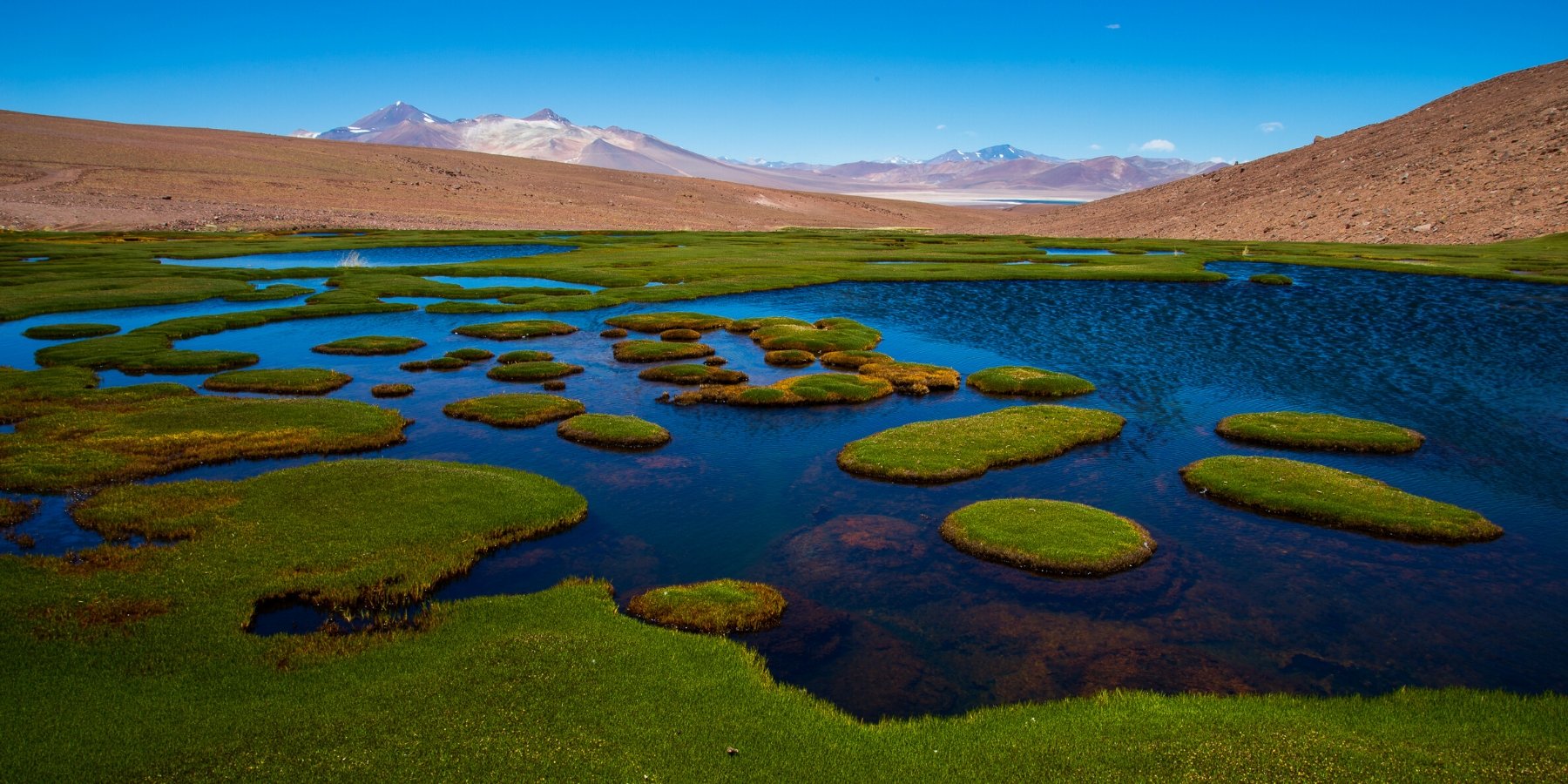
‘There’s a saying: we don’t inherit the Earth from our ancestors, we borrow it from our children. When we show you our country, this philosophy guides everything we do. It’s our responsibility to preserve the environment and wildlife, and support communities. That means using slower modes of transport, like cycling, employing local people, and working with communities who’ll benefit directly from your visit. This also gives you the best, most authentic impression of the places we want to share with you.
We prefer to buy local products in ecological bags, to avoid the use of plastic bags, likewise we teach the use of soaps and ecological products in each tour that we organize. We also work on reforestation projects with local communities who take care of landscape resources such as communal reserves, national parks.
‘There’s a saying: we don’t inherit the Earth from our ancestors, we borrow it from our children. When we show you our country, this philosophy guides everything we do. It’s our responsibility to preserve the environment and wildlife, and support communities. That means using slower modes of transport, like cycling, employing local people, and working with communities who’ll benefit directly from your visit. This also gives you the best, most authentic impression of the places we want to share with you.
We prefer to buy local products in ecological bags, to avoid the use of plastic bags, likewise we teach the use of soaps and ecological products in each tour that we organize. We also work on reforestation projects with local communities who take care of landscape resources such as communal reserves, national parks.

Embark on an incredible Cusco Andean exploration through Lares trek with a taste of the iconic Inca Trail to Machu Picchu, through the Sacred Valley of the Incas.
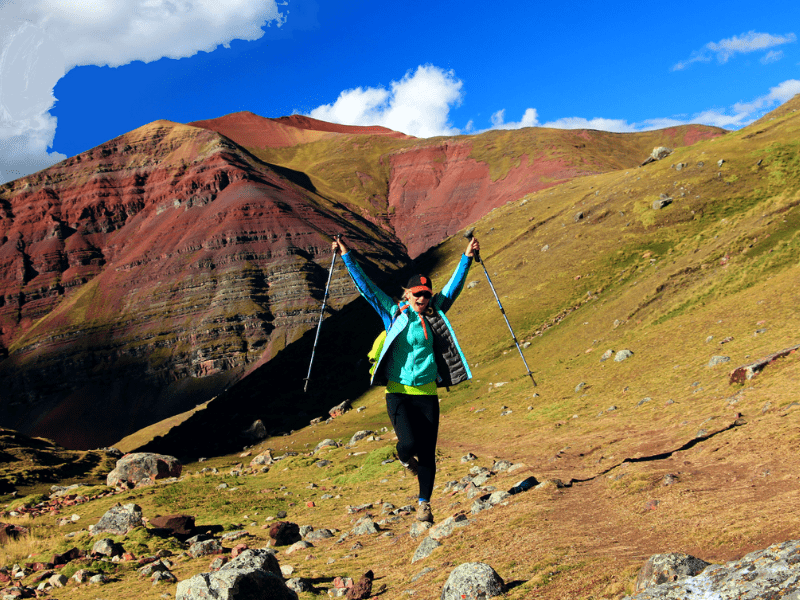
Ausangate Trek & Rainbow Mountain, Explore this route of turquoise lakes, imposing snow-capped mountains, little-visited trails and Very experienced trekking guides.

Ancascocha Trek & Classic Inca Trail to Machu Picchu will take you through beautiful landscapes and snowy mountains surrounded by colorful lakes and waterfalls. You will discover ancient inca ruins, local flora and fauna of Machu Picchu.